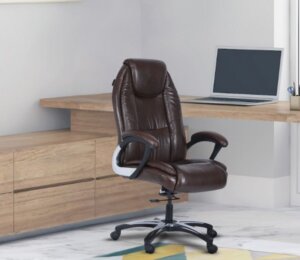
In today’s work culture—where many of us spend eight hours or more seated at a desk—the importance of a supportive and well-designed chair for office ergonomics cannot be overstated. An ergonomic office chair doesn’t just add style to your workspace; it’s a crucial tool for maintaining good posture, enhancing comfort, and preventing long-term musculoskeletal problems.
But with so many chair styles, materials, and features available, how do you select the right one that truly supports ergonomic needs? This guide will walk you through the essential considerations for choosing the right chair for office ergonomics, helping you make an informed decision for your health and productivity.
Why Ergonomics Matters in the Office
Ergonomics is the science of designing tools, furniture, and workspaces that fit the human body, rather than forcing the body to adapt to uncomfortable or unnatural positions. Poor ergonomics can lead to a range of issues including:
-
Back and neck pain
-
Carpal tunnel syndrome
-
Reduced productivity
-
Chronic fatigue
-
Long-term spinal damage
A well-designed ergonomic office chair minimizes these risks by supporting the natural curves of your spine, encouraging proper posture, and reducing unnecessary pressure on muscles and joints.
Essential Features of an Ergonomic Office Chair

When shopping for a chair for ergonomic support, there are several critical features to look for. Not every chair will include all of these, but the more adjustable and supportive the chair, the better it will serve your body in the long run.
1. Adjustable Seat Height
Your feet should rest flat on the floor, with your thighs parallel to the ground and knees at a 90-degree angle. Chairs with a pneumatic height adjustment lever allow users of different heights to find the most suitable seat height.
Tip: Aim for a seat height range of about 16 to 21 inches from the floor.
2. Lumbar (Lower Back) Support
A good ergonomic chair supports the inward curve of your lower back. Without lumbar support, prolonged sitting can flatten the natural curve and strain the spine. Choose a chair with adjustable lumbar depth and height if possible.
3. Seat Depth and Width
The seat should be deep enough to support most of your thighs while leaving 2–4 inches between the seat edge and the back of your knees. Too shallow, and it won’t support your legs; too deep, and it cuts into your calves.
4. Backrest Recline and Tilt Lock
Your chair’s backrest should be able to recline while still offering support. Adjustable recline encourages micro-movements and can help relieve spinal pressure during long sitting sessions.
Ergonomic benefit: A reclining chair promotes dynamic sitting, allowing your muscles to stay engaged.
5. Armrests
Adjustable armrests help keep your shoulders relaxed and elbows bent at around 90 degrees. They reduce strain on your upper back, shoulders, and wrists.
Avoid chairs with fixed armrests unless they naturally fit your desk height and arm length.
6. Seat Cushioning and Material
Look for dense foam or memory foam that won’t flatten over time. A waterfall seat edge—where the seat curves slightly downward—helps promote better leg circulation.
As for upholstery:
-
Mesh promotes airflow and is great for warmer environments
-
Fabric offers softness and comfort
-
Leather or faux leather brings a premium look but can trap heat
7. Mobility and Swivel Base
A five-point wheelbase offers greater stability and ease of movement. The ability to rotate allows you to reach different parts of your workstation without straining.
Match the Chair to Your Workstyle and Space
Different professions and work habits call for different types of chairs. Here’s how to align your choice with your usage:
| Work Style | Recommended Chair Type |
|---|---|
| Full-day desk work | High-back ergonomic chair with lumbar support |
| Occasional computer use | Mid-back mesh chair or task chair |
| Executive or client-facing | Executive padded chair with recline function |
| Compact home office | Adjustable, space-saving chair with wheels |
| Wellness-focused setups | Ergonomic kneeling or balance stool (alternate use) |
Common Mistakes to Avoid When Choosing an Office Chair
Even the most expensive office chair won’t work well if it’s not suited to your body or workstation. Here are some common mistakes to avoid:
-
Ignoring adjustability: A chair that can’t be customized will rarely offer full ergonomic support
-
Overlooking lumbar support: Many stylish chairs skip this crucial feature
-
Choosing based on price alone: Budget is important, but investing in your health has long-term value
-
Not considering your desk height: Chair and desk must work together to support proper posture
Top Recommendations
While there are many brands in the market, platforms like Wooden Street offer a wide range of ergonomic office chairs designed for comfort, durability, and style. From mesh to high-back executive options, you’ll find models that suit both professional and home offices at competitive price points.
Final Thoughts
Choosing the right chair for office ergonomics is one of the smartest decisions you can make for your health and productivity. A properly designed chair supports your posture, reduces fatigue, and minimizes the risk of chronic pain, especially when combined with regular movement and correct desk ergonomics.
Don’t treat your office chair as just another piece of furniture. Treat it as a tool for wellness and efficiency—and invest in one that works as hard as you do.




